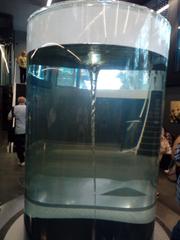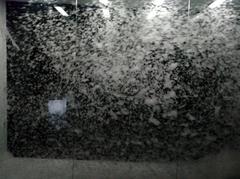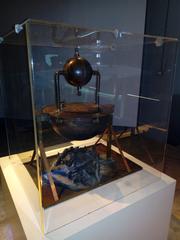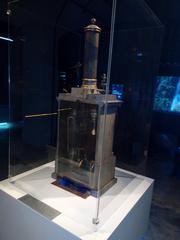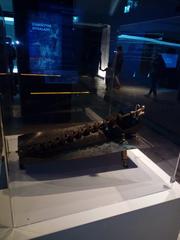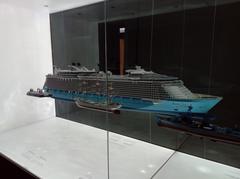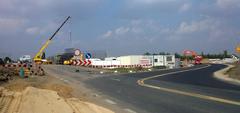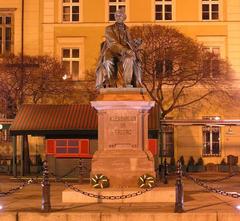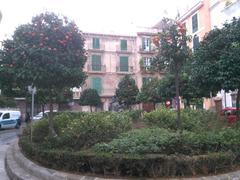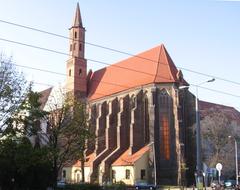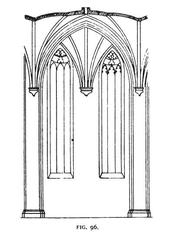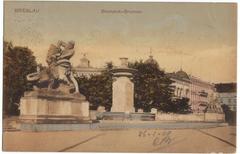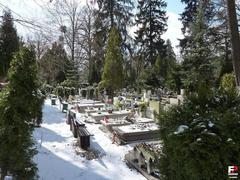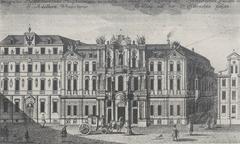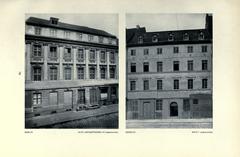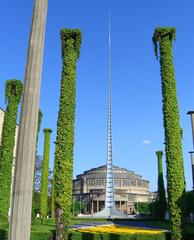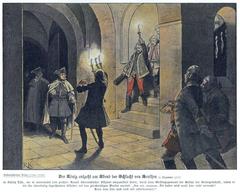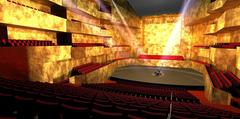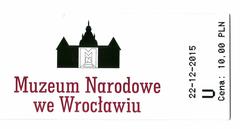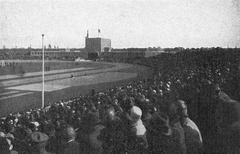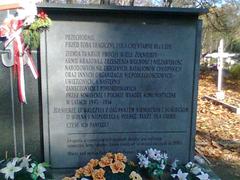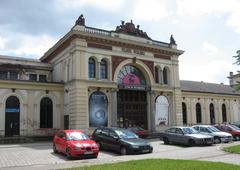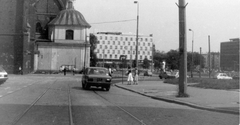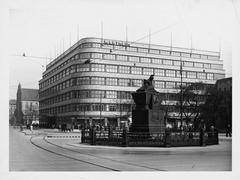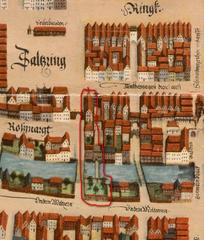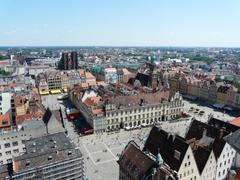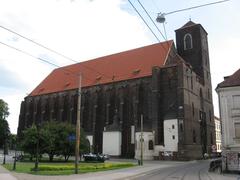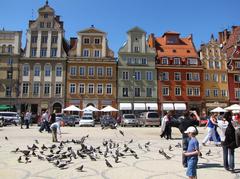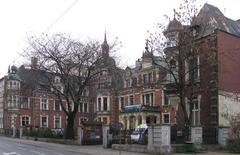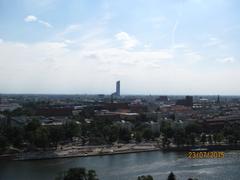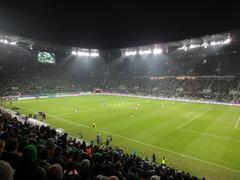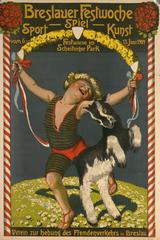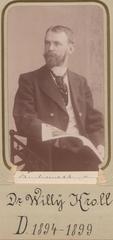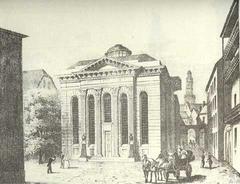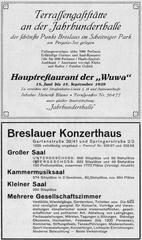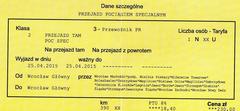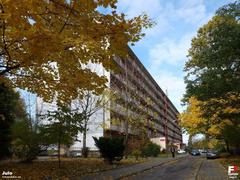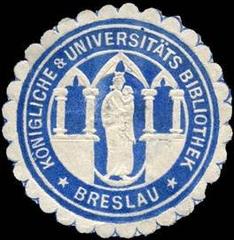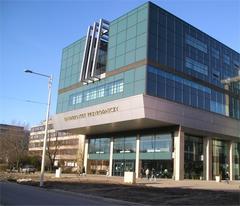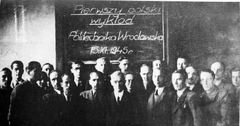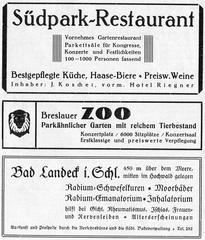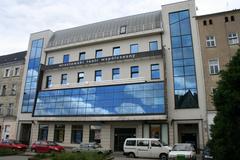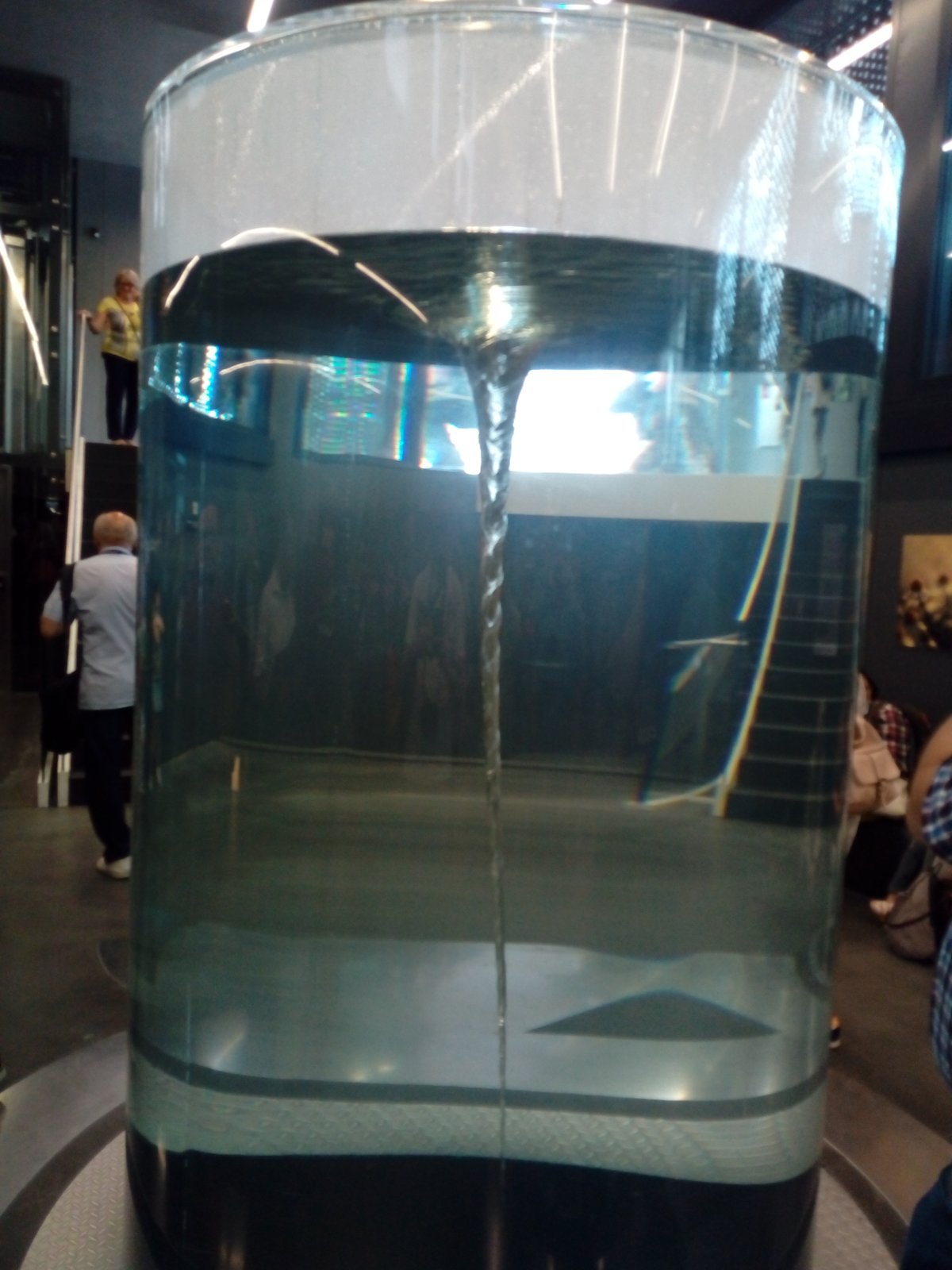
Comprehensive Guide to Visiting MPWiK Wrocław, Poland
Last Updated Date: 18/07/2024
Introduction to MPWiK Wrocław
Wrocław, a picturesque city nestled on the banks of the Oder River, is renowned for its rich cultural heritage and stunning architecture. However, one of the lesser-known but equally fascinating aspects of this city is its history of water management. The Municipal Water and Sewage Company in Wrocław (MPWiK) plays a pivotal role in maintaining the city’s water supply and sewage infrastructure, a legacy that dates back to medieval times. This comprehensive guide delves into MPWiK’s historical significance, its current operations, and what visitors can expect when exploring this vital institution. Whether you’re a history enthusiast, a student of engineering, or simply curious about urban infrastructure, this guide provides a detailed overview of Wrocław’s journey from rudimentary water systems to modern, sustainable water management practices (source).
Table of Contents
- Introduction
- A History of Water Management in Wrocław
- MPWiK - A Legacy of Innovation and Service
- Visitor Information - MPWiK Visiting Hours and Tickets
- Special Events and Nearby Attractions
- Accessibility Information
- Exploring Wrocław’s Historic Water Management Sites
- Educational Programs and Workshops
- Exploring Wrocław’s Water Network
- Tips for Visiting MPWiK-Related Attractions
- FAQ
- Conclusion
A History of Water Management in Wrocław
Early Water Systems and Challenges
Wrocław, strategically located on the Oder River, has always had a close relationship with water. This relationship, however, has been a double-edged sword. While the river provided opportunities for trade and transportation, it also posed a constant threat of floods. The city’s history is marked by both devastating floods and innovative engineering solutions to manage them.
The earliest attempts at water management in Wrocław date back to the Middle Ages. As the city grew, so did the need for clean water and effective sanitation. Medieval Wrocław saw the construction of:
- Public wells - These provided drinking water but had limited reach and sanitation.
- Wooden water pipes - These rudimentary systems distributed water from the Oder River, but their effectiveness was questionable.
- Open sewers - While a step towards sanitation, open sewers posed significant health risks.
These early systems were rudimentary and often inadequate. Wrocław, like many medieval cities, faced recurring outbreaks of waterborne diseases such as cholera.
The Birth of Modern Water Management
The 19th century marked a turning point in Wrocław’s approach to water management. The Industrial Revolution brought rapid population growth and increased demands on the city’s infrastructure. This period saw the implementation of several groundbreaking projects:
- Construction of a modern sewer system (1842-1892) - This ambitious project, spanning several decades, aimed to address the city’s sanitation challenges.
- Establishment of the first waterworks (1871) - This marked a significant step towards providing clean and safe drinking water to the city’s residents.
- Expansion of the water supply network - The late 19th and early 20th centuries saw continuous efforts to expand the water supply network to reach more citizens.
These developments were crucial in improving public health and laying the foundation for a modern water management system.
MPWiK - A Legacy of Innovation and Service
The Formation of MPWiK
The Municipal Water and Sewage Company in Wrocław (MPWiK) was officially established in 1991. However, its roots go back much further, representing a continuation of the city’s long-standing commitment to water management. MPWiK inherited the infrastructure and expertise developed over centuries, taking on the responsibility of providing water and wastewater services to Wrocław’s growing population.
MPWiK Today - A Vital Lifeline for Wrocław
Today, MPWiK stands as a testament to Wrocław’s dedication to sustainable water management. The company is responsible for:
- Supplying drinking water - MPWiK provides over 100 million cubic meters of high-quality drinking water annually to Wrocław’s residents and businesses.
- Wastewater treatment - The company treats over 120 million cubic meters of wastewater each year, ensuring environmental protection and compliance with stringent standards.
- Maintaining water and sewage infrastructure - MPWiK manages a vast network of water pipes, sewers, pumping stations, and treatment plants, ensuring the system’s efficiency and reliability.
MPWiK’s Commitment to Sustainability
MPWiK recognizes the importance of sustainable water management practices. The company is actively involved in:
- Protecting water resources - MPWiK implements measures to conserve water, reduce water loss, and protect the Oława-Bierutów Aquifer, a vital source of drinking water for the region.
- Investing in modern technologies - The company continuously upgrades its infrastructure and adopts innovative technologies to improve efficiency and reduce its environmental impact.
- Educating the public - MPWiK actively engages in educational initiatives to raise awareness about water conservation and environmental protection.
MPWiK’s commitment to sustainability ensures that Wrocław’s water resources are managed responsibly for current and future generations.
Visitor Information - MPWiK Visiting Hours and Tickets
If you’re interested in learning more about Wrocław’s water management history, MPWiK offers guided tours to the public. Here are some key details for visitors:
- Visiting Hours - Tours are available Monday to Friday from 9 AM to 5 PM. Weekend tours can be arranged by appointment.
- Tickets - Tickets can be purchased at the MPWiK visitor center or online through the official website. Prices start at 20 PLN for adults and 10 PLN for children and students.
- Guided Tours - Knowledgeable guides provide insights into the history, current operations, and future plans of MPWiK. Tours are available in multiple languages.
Special Events and Nearby Attractions
MPWiK often hosts special events, such as open days and educational workshops, which provide a deeper understanding of water management. Check the official MPWiK website for the latest event schedule.
Nearby attractions for visitors interested in historical sites include the Centennial Hall, the Wrocław Cathedral, and the Panorama of the Battle of Racławice. These sites offer additional insights into Wrocław’s rich history and cultural heritage.
Accessibility Information
MPWiK is committed to providing an inclusive experience for all visitors. The visitor center and tour routes are wheelchair accessible. For any specific accessibility needs, please contact MPWiK in advance to ensure a comfortable visit.
Exploring Wrocław’s Historic Water Management Sites
The Old Water Treatment Plant “Na Grobli”
The Old Water Treatment Plant in Wrocław, dating back to 1893, stands as a testament to the city’s pioneering role in water management. Now a fascinating museum, it offers visitors a glimpse into the past.
Key Features:
- Historical Exhibits - Explore preserved machinery and equipment, showcasing the evolution of water treatment technology from the late 19th century.
- Architectural Marvel - Admire the building’s unique industrial architecture, a blend of brick and steel, characteristic of the late 19th-century industrial boom.
- Educational Experience - Learn about the challenges of providing clean water to a growing city and the innovative solutions employed at the time.
Visitor Information:
- Guided Tours - Join a guided tour to gain deeper insights into the plant’s history and workings. Check the MPWiK website or contact them directly for tour schedules and booking information.
- Special Events - The Old Water Treatment Plant occasionally hosts special events, exhibitions, and workshops related to water and history.
- Opening Hours - The plant is open to visitors from 9 AM to 5 PM on weekdays. Weekends are reserved for special events.
- Tickets - Entry to the Old Water Treatment Plant is priced at 20 PLN for adults and 10 PLN for children and seniors. Special rates apply for group bookings.
The Water Tower
Although not open to the public for climbing, the Water Tower, located near the Old Water Treatment Plant, is a prominent landmark visible from various points in the city. Built in the same architectural style as the plant, it serves as a visual reminder of Wrocław’s water management history.
Educational Programs and Workshops
MPWiK Wrocław is committed to educating the public, especially younger generations, about the importance of water conservation and environmental responsibility.
Offerings:
- School Visits - Tailored programs for school groups, combining educational presentations with interactive exhibits and tours of the Old Water Treatment Plant.
- Public Workshops - Periodic workshops on topics like water conservation, water quality, and sustainable living practices.
Information and Booking: Details about educational programs, workshops, and booking procedures can be found on the MPWiK Wrocław website or by contacting their educational department.
Exploring Wrocław’s Water Network
While not directly managed by MPWiK, several attractions in Wrocław are intertwined with the city’s water network and offer engaging experiences for visitors interested in water-related themes.
- Wrocław’s Canals and Islands - Explore the city’s intricate network of canals, often referred to as the “Venice of Poland,” by boat tour or stroll along the banks.
- The Multimedia Fountain - Located in Szczytnicki Park, this fountain offers spectacular water shows synchronized with music and lights, particularly captivating in the evenings.
- Hydropolis - This interactive knowledge center dedicated to water offers engaging exhibits on the science, history, and significance of water.
Tips for Visiting MPWiK-Related Attractions
- Plan Ahead - Check the operating hours and tour schedules for the Old Water Treatment Plant and other attractions in advance.
- Website Resources - Utilize the MPWiK Wrocław website for information on attractions, educational programs, events, and contact details.
- Combine Your Visit - Combine your visit to MPWiK attractions with exploring Wrocław’s other water-related landmarks for a comprehensive experience.
- Photography - Capture the unique industrial architecture of the Old Water Treatment Plant and the picturesque canals and bridges of Wrocław.
- Respect the Environment - Be mindful of water conservation and dispose of waste responsibly, especially when visiting water-related attractions.
FAQ
What are the visiting hours for the Old Water Treatment Plant in Wrocław? The Old Water Treatment Plant is open to visitors from 9 AM to 5 PM on weekdays. Weekends are reserved for special events.
How much are the tickets for the Old Water Treatment Plant? Entry is priced at 20 PLN for adults and 10 PLN for children and seniors. Special rates apply for group bookings.
What are some nearby attractions to visit? Visitors can explore Wrocław’s Canals and Islands, enjoy the Multimedia Fountain in Szczytnicki Park, and visit Hydropolis for more water-related experiences.
Conclusion
From its medieval beginnings to its role as a modern utility provider, MPWiK exemplifies Wrocław’s dedication to effective water management. Whether you’re a history enthusiast or simply curious about how cities manage essential resources, a visit to MPWiK offers valuable insights. Plan your visit today and discover the legacy of innovation and service that continues to shape Wrocław.
For more information, visit the official MPWiK website and stay updated with the latest news and events.
Sources and References
- MPWiK in Wrocław - Visiting Hours, Tickets, and Historical Significance, 2024, MPWiK https://www.mpwik.wroclaw.pl/
- Exploring Wrocław’s Historic Water Management Sites - Old Water Treatment Plant and More, 2024, MPWiK https://www.mpwik.wroclaw.pl/
- Visiting MPWiK Wrocław - Tours, Events, and Water Heritage in Wrocław, 2024, MPWiK https://www.mpwik.wroclaw.pl/
